Ten kilometers off the coast of Dongshih (東石) Fishing Harbor in Chiayi County, a long stretch of sand rises up from the seafloor, forming Waisanding Sandbar (外傘頂洲). This unassuming mass of sand is economically important for two reasons: Not only does it generate local tourism revenue from curious visitors, but it also offers protection to Dongshih’s offshore waters, Taiwan’s largest oyster-producing region.
OYSTER FARMS EVERYWHERE
Tourists who wish to visit Waisanding Sandbar may do so by boarding one of the tourist boats at Dongshih Fishing Harbor. Reservations are recommended as the boats often fill up with large local tour groups. The boat ride takes just under an hour, and at noon there is even a nice buffet seafood lunch included on board (with oysters, of course). The cost is NT$450 without lunch and NT$600 with lunch.
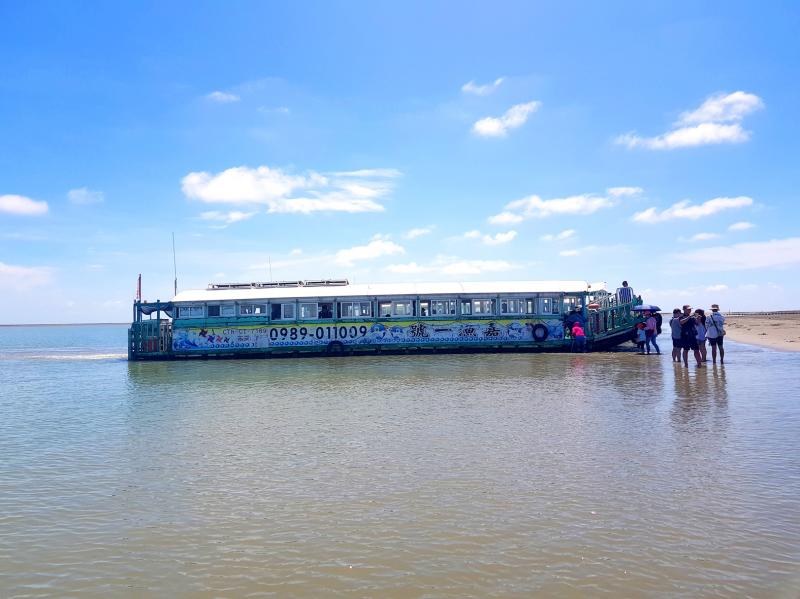
Photo: Tyler Cottenie
The ride out is usually quite calm. In fact, these flat-bottomed tourist boats have a very low profile and are clearly designed only to operate in the protected, shallow waters between Taiwan and the sandbar.
At the time of the Japanese takeover of Taiwan in 1895, Waisanding Sandbar was located off the coast of what is now southern Yunlin County. The sand that formed it was then being continually replenished by deposits from the Jhuoshuei River (濁水溪) system. At the time, the Beigang River (北港溪), which forms the border between today’s Yunlin and Chiayi counties, was a distributary of the mighty Jhuoshuei River. Large amounts of sand were being continuously delivered to the ocean adjacent to Waisanding Sandbar.
However, the Japanese built a dike in 1911 that severed the Beigang River’s connection to the Jhuoshuei River system. This greatly reduced the amount of sediment being carried downstream to the outlet at Beigang, setting in motion changes to Waisanding Sandbar that continue to this day. By the 1920s, Japanese maps show the sandbar had already drifted south by several kilometers. In the latter half of the 20th century, it began drifting toward the coast of Taiwan, and in recent years it has shrunk significantly. The sandbar now sits off the coast of Chiayi County, but due to historical tradition, still belongs to Yunlin County. A 2006 request by Chiayi to have jurisdiction over the sandbar handed over from Yunlin was denied.
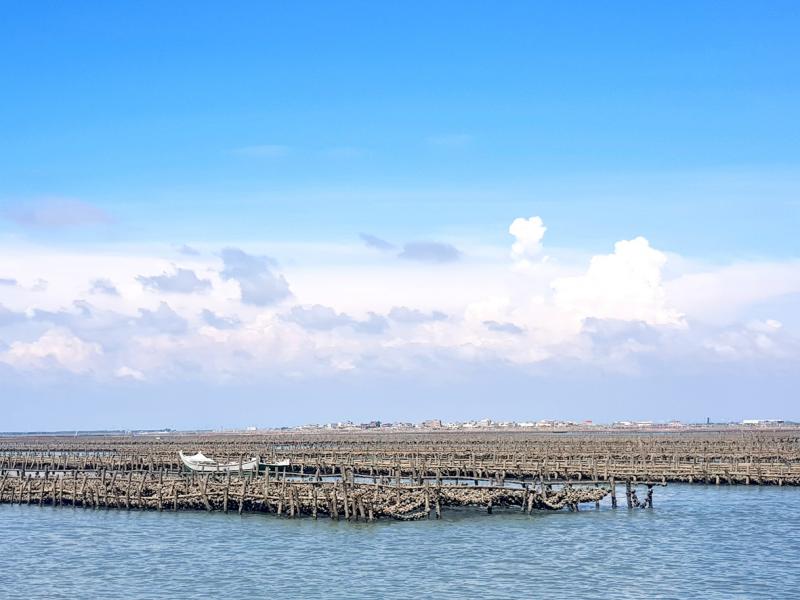
Photo: Tyler Cottenie
On the way out to the sandbar, the boat navigates through oyster farming platforms, each adorned with a different colorful flag or other object to identify its owner. According to our guide, 70 percent of all oysters eaten in Taiwan come from the Dongshih area, and the boat ride out to Waisanding Sandbar gives one an appreciation for the massive scale of the oyster farming operations here. One can also understand why Chiayi County wants to have an active role in managing the protective sandbar.
The sandbar’s reduction in size has been compounded by the construction of check dams in nearby rivers, which have further reduced the amount of sediment reaching the ocean. It has been estimated that without intervention to replenish the sand or prevent further loss of sand, the sandbar may disappear altogether within the next eight years. However, officials this year have agreed on measures to protect the sandbar, including sandbagging, the construction of a groin and delivery of sediment from dredging operations in nearby harbors.
THE SANDBAR
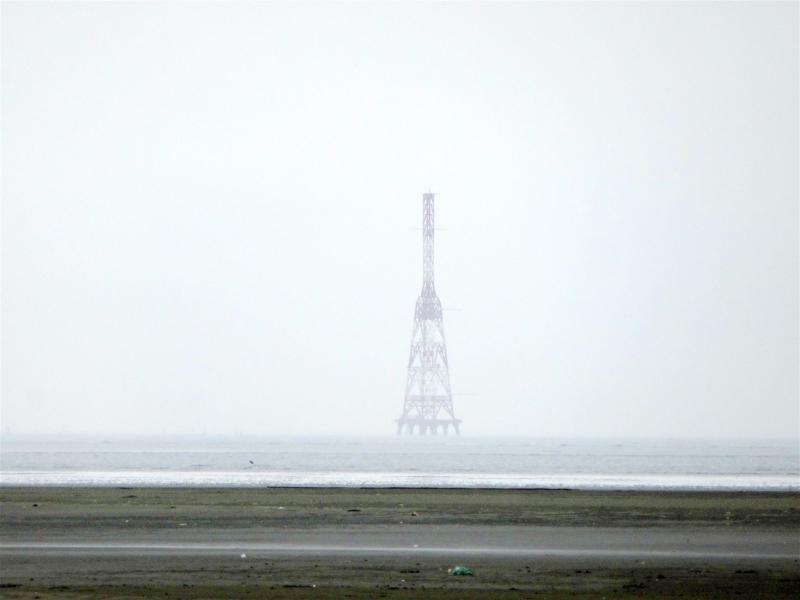
Photo: Tyler Cottenie
Stepping off the boat onto the sandbar, it’s hard to imagine this place once had over 1,000 inhabitants. All one sees now is an enormous expanse of dark sand barely a meter above sea level, littered here and there with abandoned oyster farming equipment and random refuse from the ocean. Far to the east, taller buildings along the coast of Chiayi are visible. To the north, it’s sand as far as the eye can see. To the west, the rougher waters of the Taiwan Strait can be seen, as the sandbar is now less than 1km wide where the tourist boat beaches. Finally, to the south, there is a peculiar sight: a steel structure several stories high.
This structure is the Wengangdui Lighthouse (塭港堆燈塔). My original goal for the day was to walk over to it, time permitting. However, after only a few minutes of walking, it became apparent that there was no way I would reach it—unless I wanted to start swimming. The land around the lighthouse’s base has already been reclaimed by the ocean and the structure now sits about 1km off shore in the middle of the ocean.
This is not the first time the Wengangdui Lighthouse has been threatened by the shifting sands of this sandbar. First built in 1914, it collapsed after only six years. It was immediately rebuilt, but has suffered the same fate many times over since then. Altogether, it has been rebuilt seven times, more than any other Taiwanese lighthouse.
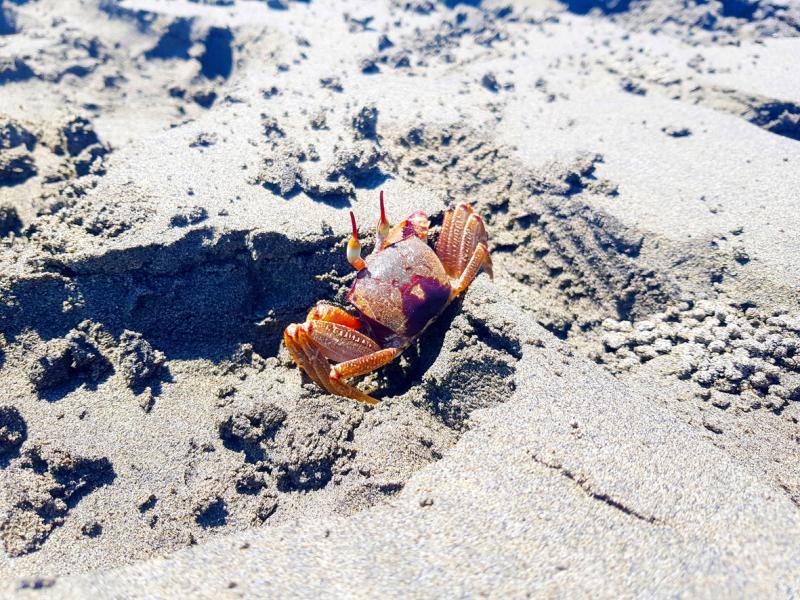
Photo: Tyler Cottenie
Most tourists spend their hour on the sandbar exploring the coastal marine life. Despite its desolate appearance, the sandbar is actually teeming with organisms that prefer the sheltered, shallow, sandy environment. At low tide, look closely and you may see a collection of tiny rubbery straws sticking out of the sand, made by resident tube worms. Keep your eyes peeled for the feisty orange horn-eyed ghost crab, or the smaller sand bubbler crabs, which leave the beach littered with tiny sand pellets. Finally, there are large hamaguri clams hiding in the sand. The tourist boats usually bring along rakes and shovels that tourists can borrow.
On a hot day, a cool dip in the ocean here might seem like a good idea. However, local attitudes toward water must be taken into account. When my travel partner attempted a quick swim, the backlash was swift and fierce. Tourists started gawking, the guide started running over and yelling at him and the captain of the boat even blasted the horn at him for the reckless behavior of swimming in calm ocean waters. Visitors to the sandbar might want to save themselves the trouble and just leave their swimsuits at home.
The ride back to Dongshih fishing harbor follows approximately the same route. With the main event over and nothing new to see, one might expect the mood to be rather subdued on the return trip. However, all tourist boats also come equipped with karaoke systems, making the return trip arguably the most lively part of the whole day. Our guide kicked things off with a solo piece before passing the microphone around for other passengers to join in. And join in they did. Later, there were even props and costumes. Blasting karaoke songs on a boat as we cruised by farmers tending to their oysters seemed like a fitting end to this excursion in rural Taiwan.
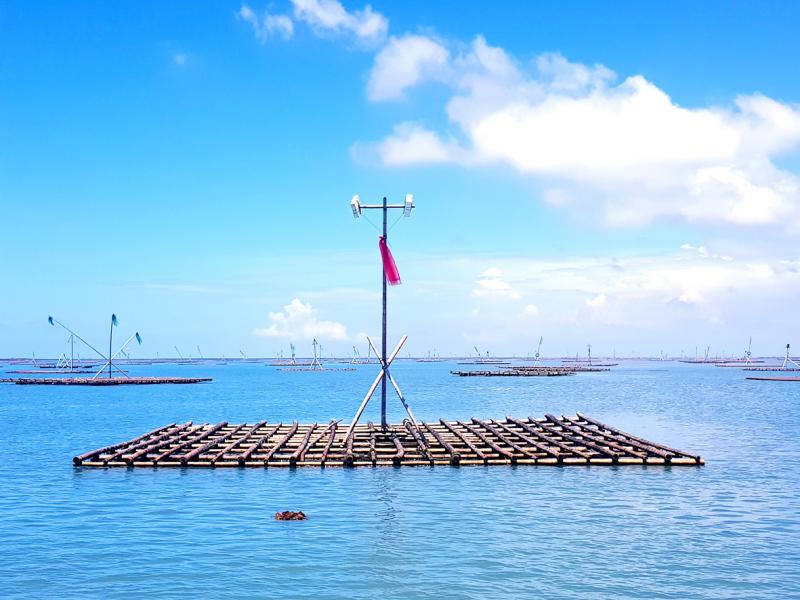
Photo: Tyler Cottenie
For more information, call: (09) 8901-1009 (Chinese).

This month the government ordered a one-year block of Xiaohongshu (小紅書) or Rednote, a Chinese social media platform with more than 3 million users in Taiwan. The government pointed to widespread fraud activity on the platform, along with cybersecurity failures. Officials said that they had reached out to the company and asked it to change. However, they received no response. The pro-China parties, the Chinese Nationalist Party (KMT) and Taiwan People’s Party (TPP), immediately swung into action, denouncing the ban as an attack on free speech. This “free speech” claim was then echoed by the People’s Republic of China (PRC),

Exceptions to the rule are sometimes revealing. For a brief few years, there was an emerging ideological split between the Democratic Progressive Party (DPP) and Chinese Nationalist Party (KMT) that appeared to be pushing the DPP in a direction that would be considered more liberal, and the KMT more conservative. In the previous column, “The KMT-DPP’s bureaucrat-led developmental state” (Dec. 11, page 12), we examined how Taiwan’s democratic system developed, and how both the two main parties largely accepted a similar consensus on how Taiwan should be run domestically and did not split along the left-right lines more familiar in

Many people in Taiwan first learned about universal basic income (UBI) — the idea that the government should provide regular, no-strings-attached payments to each citizen — in 2019. While seeking the Democratic nomination for the 2020 US presidential election, Andrew Yang, a politician of Taiwanese descent, said that, if elected, he’d institute a UBI of US$1,000 per month to “get the economic boot off of people’s throats, allowing them to lift their heads up, breathe, and get excited for the future.” His campaign petered out, but the concept of UBI hasn’t gone away. Throughout the industrialized world, there are fears that

Most heroes are remembered for the battles they fought. Taiwan’s Black Bat Squadron is remembered for flying into Chinese airspace 838 times between 1953 and 1967, and for the 148 men whose sacrifice bought the intelligence that kept Taiwan secure. Two-thirds of the squadron died carrying out missions most people wouldn’t learn about for another 40 years. The squadron lost 15 aircraft and 148 crew members over those 14 years, making it the deadliest unit in Taiwan’s military history by casualty rate. They flew at night, often at low altitudes, straight into some of the most heavily defended airspace in Asia.